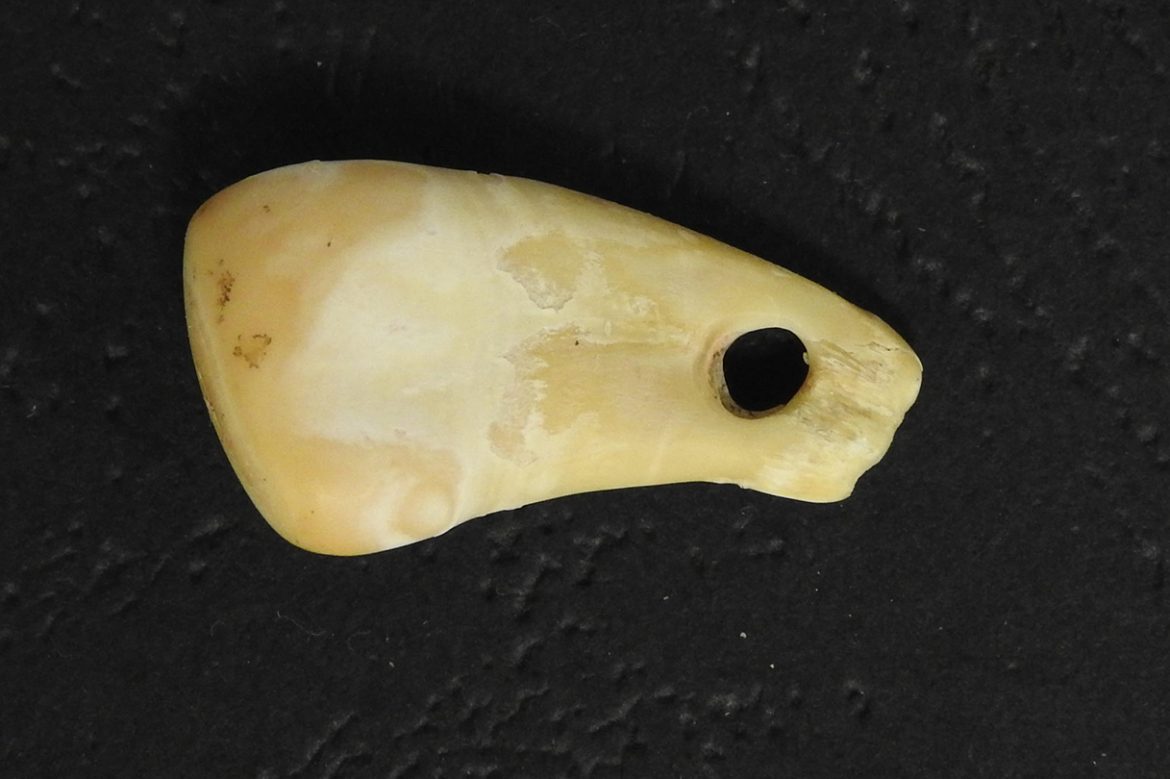
DNA Hidden in Bones
Advances in genetic analysis continue to open up new perspectives in archaeology. Scientists managed to successfully analyse sweat and skin samples on a necklace made of deer tusk dating to about 20,000 years ago, and they found out the gender and the origins of its owner.
The scientists used a novel non-destructive method to extract DNA from an object dating back to the Palaeolithic, and thus provided a new means to obtain information regarding how man-made tools or jewelry belonging to such ancient ages were made or who used them. Although ancient DNA was already extracted from teeth, bone, or hair samples before, this is the first time researchers got successful results with such an old sample.
Experimenting with different chemicals and methods for five years, the researchers achieved the most successful results after soaking a pendant made of deer tooth in a diluted solution of sodium phosphate and heating it slowly up to 90℃. This helped expose the DNA molecules that had penetrated the pores on the bone. The technique is said to be similar to using higher temperatures to remove hard and deep stains from very dirty laundry.
One of the reasons why the researchers failed in their first few attempts was because the Palaeolithic objects were contaminated with modern DNA. That is the contamination with the DNA of people who came into contact with these objects during or after excavation, or contamination with substances that inhibit DNA extraction.
2019 yılında, araştırmayı yürüten Matthias Meyer’i ziyaret eden arkeolog Maxim Kozlikin, Sibirya’nın Altay Dağları’ndaki meşhur Denisova Mağarası’ndan aldığı bir numune üzerinde Meyer’in bir deney yapmak isteyebileceğini düşünmüş. Eldiven, maske ve koruyucu giysilerle çalışan arkeologların, bu geyik dişi kolye ucu üzerindeki toprağı dahi temizlemeden doğrudan kilitli torbaya almış olması, Meyer’in şansını açmış: ‘‘Kolye ucundan elde ettiğimiz insan DNA’sı miktarı inanılmaz boyuttaydı, adeta bir insan dişi analiz ediyorduk.’’
Archaeologist Maxim Kozlikin, who visited Matthias Meyer as he was conducting research in 2019, considered the possibility that Meyer might want to carry out an experiment on a sample he took from the famous Denisova Cave in Siberia’s Altai Mountains. To Meyer’s luck, the archaeologists had worked with gloves, masks, and protective gear, and placed the deer tooth pendant directly into a zip lock bag without even cleaning the soil covering it. “The amount of human DNA we recovered from the pendant was extraordinary,” says Elena Essel, from the research team, “almost as if we had sampled a human tooth.” She also warns archaeologists: “Please, please, please wear gloves and face masks if you want to look at the DNA of the people who were making these things and using them.”
With the help of mitochondrial genomes they obtained through the analysis, they determined that the necklace was roughly between 19,000 and 25,000 years old, without even a need for C-14 (Carbon 14) analysis –a method commonly used in dating studies. Additionally, the number of X chromosomes they determined indicated that the necklace was made or last worn by a woman, genetically related to the “Ancient North Eurasians (Maltinsko-Buretskaya culture).”
Since man-made daily objects from the Stone Age are very limited in number, it is virtually impossible to obtain information about the daily lives, behavioural patterns, culture, and social structure of our ancestors. However, with the adaptation of genetic technology to disciplines such as archaeology and anthropology, advances that once seemed impossible in these fields keep increasing every day. The work of Meyer and his team will shed light on who made the objects used in everyday life thousands of years ago, and maybe even on why they made them.[
REFERENCES
- 1. https://phys.org/news/2023-05-scientists-recover-ancient-woman-dna.html
- 2. https://www.science.org/content/article/wore-ancient-deer-pendant-dna-reveals-stone-age-woman-surprising-origins
